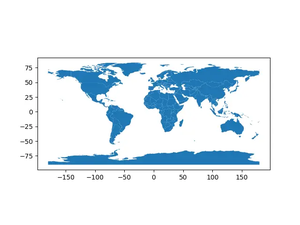Pandas Profiling is an invaluable tool for anyone looking to dive deeper into data analysis with Python. It generates descriptive statistics that are essential for understanding the basic structure of a dataset. This tutorial will cover how to use Pandas Profiling in various scenarios, ranging from basic to advanced examples. By the end, you’ll have a solid foundation to use this powerful library to accelerate your data analysis tasks.
Preparation
Before diving into the examples, ensure you have Pandas Profiling installed. If not, you can install it using pip:
pip install pandas-profilingYou can use your own CSV data or download one of the following datasets to practice:
- Student Scores Sample Data (CSV, JSON, XLSX, XML)
- Customers Sample Data (CSV, JSON, XML, and XLSX)
- Marketing Campaigns Sample Data (CSV, JSON, XLSX, XML)
- Employees Sample Data (CSV and JSON)
Now, let’s go through four examples showing different ways you can leverage Pandas Profiling.
Example 1: Basic Overview
First, we’ll perform a basic analysis of a dataset. For simplicity, we’ll use the Iris dataset which is widely used for demonstrations.
import pandas as pd
from sklearn.datasets import load_iris
import pandas_profiling
iris = load_iris()
df = pd.DataFrame(data=iris.data, columns=iris.feature_names)
profile = df.profile_report(title='Iris Dataset Analysis')
profile.to_file("iris_analysis.html")
This generates an HTML report titled ‘Iris Dataset Analysis’ that provides an overview of the dataset including the distributions of features, missing values, and much more.
Example 2: Handling Large Datasets
With large datasets, generating a profile report can be time-consuming. You can use the minimal mode for a faster but less detailed overview.
df_large = pd.read_csv('your_large_dataset.csv')
profile = df_large.profile_report(minimal=True)
profile.to_file("large_dataset_analysis.html")
This approach reduces the generation time significantly by skipping correlations and other computationally intensive sections.
Example 3: Advanced Data Correlation
In this example, we explore advanced correlations and missing values analysis to identify patterns and relationships in our data.
df_complex = pd.read_csv('your_complex_dataset.csv')
profile = df_complex.profile_report(correlations={
"pearson": {"calculate": True},
"spearman": {"calculate": True},
"kendall": {"calculate": True}
},
missing_diagrams={
"heatmap": True,
"dendrogram": True
})
profile.to_file("complex_dataset_analysis.html")
This detailed report helps in identifying both the linear and nonlinear relationships between variables, hence facilitating a more thorough analysis.
Example 4: Interactive Dashboard
Finally, we’ll use Pandas Profiling to create an interactive dashboard. This requires Jupyter Notebook or Jupyter Lab.
df = pd.read_csv('your_dataset.csv')
profile = df.profile_report(explorative=True, html={'style':{'full_width':True}})
profile.to_widgets()
This example showcases the interactive nature of Pandas Profiling in a Jupyter environment, making it a dynamic tool for exploratory data analysis.
Conclusion
Through these examples, we’ve explored the versatility and power of Pandas Profiling for data analysis. From quick assessments of large datasets to deep dives into complex relationships, Pandas Profiling equips you with the insights needed to make informed decisions. Its ease of use and broad capabilities make it an essential tool in the data analyst’s arsenal.
